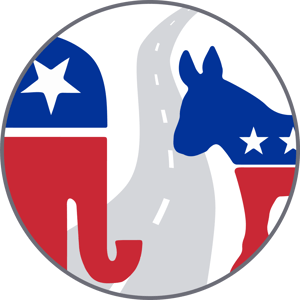US politics seem more polarized than ever. President Donald Trump and former Vice President Joe Biden are running on decidedly different platforms, as are the Republicans and Democrats fighting for congressional seats in their home states. But we’ve seen a common ground emerge: there have been indications that both political parties may be willing to tolerate bigger budget deficits to stimulate economic growth.
This idea is not a leap to understand within a Democratic agenda. But what about the other side of the aisle, once self-identified as the financially conservative Republican Party? There too we have seen a willingness to support and fund growth with deficit spending—despite the continuing existence of a financially hawkish contingent. Consider that Republicans in the Senate Budget Committee voted to increase the deficit by $1.6 trillion in 2017, which, along with some additional revenue raisers like capping the State and Local Tax Deduction (SALT), allowed them to cut the corporate tax rate to 21%. More recently, in March 2020, Congress passed the Coronavirus Aid, Relief, and Economic Security Act (CARES Act) with significant bipartisan support to prop up the economy in the midst of the pandemic.
Lessons from 2008
No matter the election results, I think there will be a fiscal package passed to stimulate growth. The degree of spending would be dictated by the balance of power in the White House and Congress. If there is a Democratic sweep, it could be a large package, in the $2 trillion to $3 trillion range. The precedent is the Democratic clean sweep in November 2008 on the heels of the global financial crisis (GFC) and recession, which put Barack Obama and Joe Biden in the White House. A fiscal package of close to $800 billion passed in February 2009.
 If we have a divided government (either Trump with a Democratic Senate or Biden with a Republican Senate), no matter who is president, I think we will get a deal, but it will probably be smaller—maybe $1.5 trillion. Once upon a time, $1.5 trillion was a lot of money.
If we have a divided government (either Trump with a Democratic Senate or Biden with a Republican Senate), no matter who is president, I think we will get a deal, but it will probably be smaller—maybe $1.5 trillion. Once upon a time, $1.5 trillion was a lot of money.
If it is a status quo result, the package would likely be somewhat restrained near $1 trillion, but at the same time, I don’t believe it would result in aggressive spending cuts. Lawmakers’ actions this year suggest that they have learned from 2008, when fear of larger deficits limited stimulus spending in response to the financial crisis. In my opinion, that fiscal austerity was a policy mistake and contributed to the “new normal” of deficient growth and lower-than-expected inflation.
The 2017 Trump tax cuts, which widened the deficit during an economic expansion, and the CARES Act marked a significant departure from the economic dogma that took hold after the GFC. That dogma likened federal budget deficits to household budget deficits and pressured governments to “tighten the belt” when they spent more than they took in. I think this is a false and risky equivalence. When a government runs a deficit through spending or tax cuts, that deficit acts like a private sector surplus. It can help lift incomes, profits and spending. When interest rates on government debt are extremely low, I believe the bond market is sending a message to the government that demand is deficient, inflation is too low and it’s time to borrow and spend. For the US, that could mean investing in schools, highways or other projects that may offer a prospective rate of return greater than the 10-year Treasury yield at 0.75%.
The middle of the road may have shifted
I think these factors leave the US with a more “middle of the road” outlook for fiscal decision making. There appears to be an increased willingness to engage in deficit spending in Washington and possibly beyond. In Europe, where large budget deficits are considered sacrilege and fiscal cooperation is rare, countries came together and issued common debt to fight the recession caused by COVID-19. That decision to issue common debt and coordinate fiscal spending may just be the saving grace for the European common currency project. Right now, when interest rates are extraordinarily low and developed countries are struggling to reverse sluggish growth and low inflation, it is vital for governments to step up and help sustain demand. I hope this change has staying power. The implication could be stronger, more durable economic growth.
MALR026313
Investment recommendations may be inconsistent with these opinions. There is no assurance that developments will transpire as forecasted and actual results will be different. Information, including that obtained from outside sources, is believed to be correct, but Loomis Sayles cannot guarantee its accuracy. Market conditions are extremely fluid and change frequently.
This is not an offer of, or a solicitation of an offer for, any investment strategy or product. Any investment that has the possibility for profits also has the possibility of losses.
Market conditions are extremely fluid and change frequently.
This blog post is provided for informational purposes only and should not be construed as investment advice. Any opinions or forecasts contained herein reflect the
subjective judgments and assumptions of the authors only and do not necessarily reflect the views of Loomis, Sayles & Company, L.P. Information, including
that obtained from outside sources, is believed to be correct, but Loomis Sayles cannot guarantee its accuracy. This material cannot be copied, reproduced or
redistributed without authorization. This information is subject to change at any time without notice.




